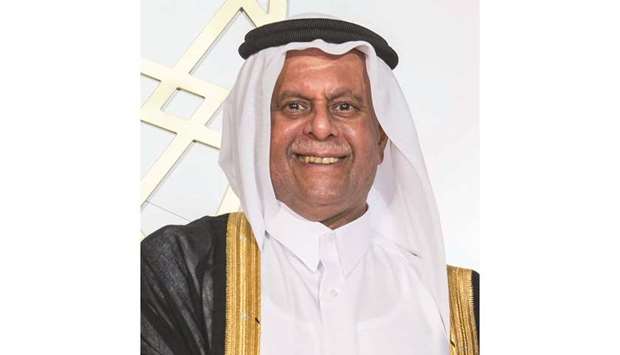As the world transitions towards a sustainable future, the use of finite resources is in question, and the current model of ‘take-make-waste’ could be replaced by a circular model, according to the Al-Attiyah Foundation.
Circular economy, the Qatar-based non-profit think tank said is one that aims to decouple economic activity from the consumption of finite resources, whilst taking waste out of the system.
In its latest research report, the Al-Attiyah Foundation explores what a circular economy is, how the world is already taking steps in this direction, and how adopting such an approach is aligned with the Qatar National Vision 2030.
HE Abdullah bin Hamad al-Attiyah said, “Moving away from a linear economy model towards a circular economy would reduce pressure on the environment, improve the security of raw materials and ultimately boost economic growth.”
The concept of a ‘circular economy’ is not the latest buzzword for sustainability; it applies thinking that has been around for centuries focused on a methodology for reducing consumption of non-renewable resources.
This is, of course, in contrast to a linear economy, which represents most economic models today — that deliver goods to the consumer by simply following the process of take-make-dispose. The circular economy is underpinned by a transition to renewable energy sources, based on three principles — to design out waste and pollution, to keep products and materials in use, and to regenerate natural systems.
Transitioning towards a circular economy can only be achieved through a systemic societal shift in thinking and behaviour, the Al-Attiyah Foundation noted.
A circular economy model views redundant consumer goods as input, rather than waste, and offers great potential for civilisation to reduce their environmental footprint.
Take the mobile phone as an example; lithium is a key component of the batteries, which is mostly imported from the US. Once discarded, the lithium component could be used to make another mobile phone, rather than being dumped or recycled into something completely new.
Certainly, for this to be successfully adopted, the full production chain of a mobile phone would need to integrate this new approach. Already, there are many projects where reusing/recycling lithium is commonplace, but to reach a complete circular economy model, positive interconnectivity between producers, manufacturers and consumers is key.
In addition, open, transparent, and well-functioning markets for metals, minerals and other natural resources are essential for ensuring access to supply and to safeguard the economic well-being of nations worldwide.
“Adopting a circular economy makes sense,” the Al-Attiyah Foundation stressed.
Moreover, moving towards a circular economy helps policy makers and influencers choose policies that protect and encourage the re-use of finite resources, as well as incentivising businesses and people to adopt this approach.
On how Qatar was faring in this shift towards a more sustainable world, the Al-Attiyah Foundation said, “The launch of the Qatar National Vision 2030 (QNV 2030) in 2008 helped consolidate the efforts of the State of Qatar to focus on sustainable development. It formed the cornerstone of the implementation of the 2030 Agenda and the subsequent UN Sustainable Development Goals.
“It has underpinned Qatar’s efforts to build a modern state with sustainable, integrated economic, social and environmental development that leverage the available human and material resources to ensure a better future for all citizens and residents of Qatar.
“The rights of the future generations would be threatened if the depletion of non-renewable resources were not compensated by the creation of new sources of renewable wealth.”
Al-Attiyah Foundation said, “The government of Qatar provides a supportive environment to enable the private sector to launch initiatives that help promote long-term sustainable growth. It is also encouraging to see companies, particularly energy companies, responding well to the efforts of governments in public-private-partnership, to adopt the circular economy model that would ensure that the four pillars of Qatar National Vision 2030 continue to be successfully addressed.
“Transitioning to a circular economy does not only amount to adjustments aimed at reducing the negative impacts of the linear economy, but also involves a systemic shift that builds long-term resilience, generates business and economic opportunities, and provides environmental and societal benefits.”

Al-Attiyah: For adopting circular economy.
